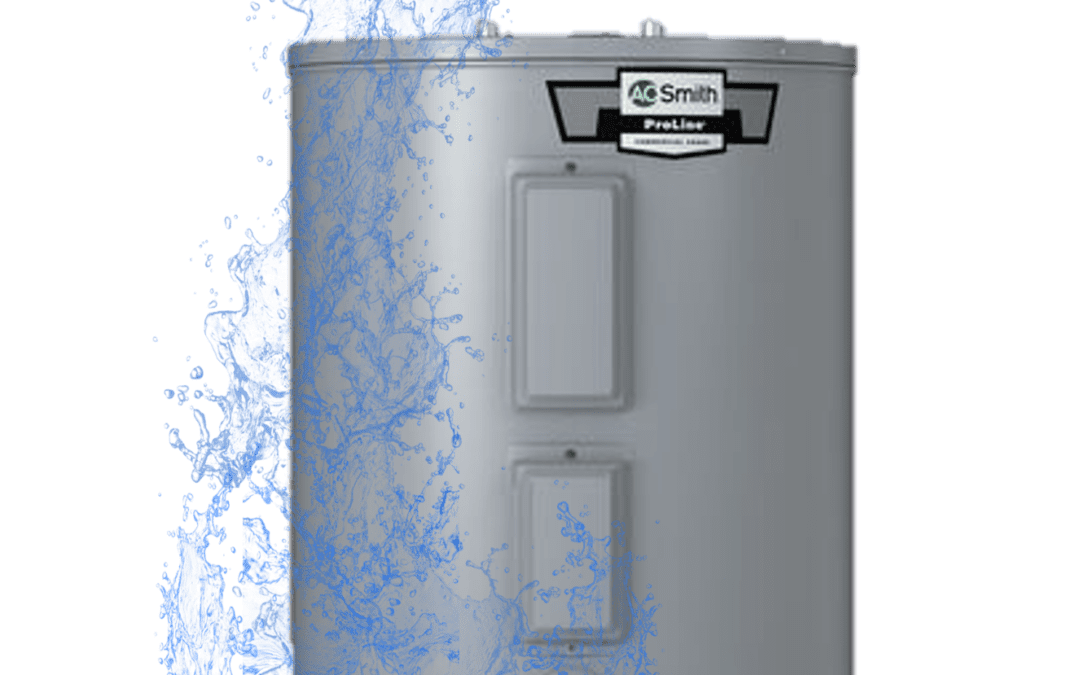What To Do If Your Water Heater is Leaking in San Antonio & Austin.
What To Do If Your Water Heater Is Leaking
A leaking water heater can quickly escalate from a minor inconvenience to a major problem, potentially causing water damage, mold growth, and safety hazards in your home. At Air & Plumbing Today, serving San Antonio and Austin, Texas, we understand the urgency of addressing water heater issues promptly. This guide outlines how to spot a leak, the risks of ignoring it, and the steps to take to minimize damage, including how to turn off your home’s main water supply if needed. While these steps can help you manage the situation, we strongly recommend contacting our professional team for expert repairs.
How to Spot a Water Heater Leak
Recognizing the signs of a leaking water heater early can save you from costly repairs. Here are the key indicators to watch for:
-
Water Pooling Around the Base: The most obvious sign is water collecting around the water heater. Even small puddles should prompt further investigation, as they may indicate a leak from the tank, connections, or valves.
-
Dampness or Water Damage: Check for moisture, discoloration, or soft spots on nearby walls, floors, or ceilings, especially if the water heater is in an attic or closet.
-
Dripping or Rushing Sounds: Stand near the water heater and listen for sounds of dripping or rushing water, which may indicate a leak even if no water is visible.
-
Reduced Hot Water Supply: If your hot water runs out faster than usual, a leak could be reducing the heater’s efficiency.
When inspecting, determine whether the water is collecting in a drain pan beneath the water heater or spilling into your home or attic. A drain pan may contain minor leaks, reducing immediate damage, but leaks inside the home or attic require urgent action to prevent structural harm.
Consequences of Ignoring a Leaking Water Heater
Failing to address a leaking water heater promptly can lead to serious and costly consequences:
|
Consequence |
Description |
Potential Impact |
|---|---|---|
|
Water Damage |
Leaks can damage floors, walls, ceilings, and personal belongings, leading to expensive repairs (Angi). |
Structural repairs, replacement of damaged items. |
|
Mold Growth |
Excess moisture creates an ideal environment for mold, which can harm health and require remediation (Chas Roberts). |
Health risks, costly mold removal. |
|
Increased Water Bills |
Leaks waste water, increasing utility costs (Hoover). |
Higher monthly expenses. |
|
Electrical Hazards |
Water contacting electrical components can cause shocks or fires, especially with electric water heaters (Nicholson). |
Safety risks, potential property damage. |
|
Gas Leaks (Gas Heaters) |
Leaks affecting gas lines in gas water heaters can lead to dangerous gas leaks (Smile HVAC). |
Fire or health hazards. |
|
Tank Failure |
Severe leaks may cause the tank to burst, resulting in significant flooding (Hoover). |
Extensive water damage, costly replacements. |
Acting quickly is essential to reduce these risks and protect your home.
Steps to Take If Your Water Heater Is Leaking
If you discover a leak, follow these steps to minimize damage and ensure safety:
-
Locate the Leak: Identify the source of the water, whether it’s the tank, inlet/outlet pipes, or pressure relief valve. This helps determine the severity and next steps.
-
Assess the Leak’s Impact: Check if the water is contained in a drain pan or spilling into your home or attic. Leaks in the home or attic are more urgent, as they can cause structural damage.
-
Turn Off the Water Supply: Locate the cold water supply valve, typically above the water heater on the cold water inlet pipe. Turn it clockwise to stop water from entering the heater (According to A.O. Smith).
-
Shut Off Power or Gas:
-
Electric Water Heaters: Turn off the circuit breaker supplying power to the heater to prevent electrical hazards.
-
Gas Water Heaters: Set the thermostat to “pilot” or turn off the gas valve, usually near the base of the heater, to avoid gas-related risks.
-
-
Drain the Tank (If Necessary): If the leak is from the tank and water continues to escape, draining the tank can reduce damage:
-
Attach a garden hose to the drain valve at the bottom of the tank.
-
Run the hose to a floor drain or outside.
-
Open a hot water faucet in your home to allow air into the system.
-
Open the drain valve to release the water.
-
Once drained, close the drain valve and remove the hose.
-
-
Turn Off the Main Water Supply (If Needed): If the leak persists after shutting off the water heater’s supply valve, turn off the home’s main water supply (see below for instructions).
-
Contact a Professional: Call Air & Plumbing Today to schedule a repair or replacement 24 hours a day. Attempting to fix the leak yourself can be risky, especially with gas heaters or complex issues.
How to Turn Off the Home’s Main Water Supply
If the leak continues despite shutting off the water heater’s supply valve, you may need to turn off the home’s main water supply to stop the flow of water:
-
Locate the Main Shutoff Valve: This is typically found:
-
Near the front of the house.
-
A utility closet or garage.
-
Outside, near the water meter or attached to an exterior wall.
-
-
Identify the Valve Type: The valve may be a gate valve (with a wheel) or a ball valve (with a lever).
-
Turn Off the Valve:
-
For gate valves, turn the wheel clockwise until it stops.
-
For ball valves, turn the lever perpendicular to the pipe.
-
-
Verify the Water Is Off: Open a faucet in your home to confirm that no water flows.
Note: Test the main shutoff valve periodically to ensure it functions properly and isn’t stuck. If the valve is difficult to turn or leaks, contact a plumber to replace it.
Why Professional Help Is Essential
While the steps above can help you manage a leaking water heater temporarily, professional intervention is often necessary to diagnose and fix the underlying issue. Leaks can stem from various causes, such as corroded tanks, faulty valves, or loose connections, and improper repairs can lead to further damage or safety risks. At Air & Plumbing Today, our experienced technicians in San Antonio and Austin, Texas, are equipped to handle water heater repairs and replacements efficiently.
Preventive Tips to Avoid Future Leaks
To reduce the risk of future water heater leaks:
-
Schedule Annual Maintenance: Have a plumber inspect your water heater yearly to check for corrosion or wear.
-
Flush the Tank: Drain and flush the tank annually to remove sediment buildup, which can cause leaks.
-
Check the Anode Rod: Replace the anode rod every few years to prevent tank corrosion.
-
Monitor Water Pressure: High water pressure can strain the tank, so consider installing a pressure regulator if needed. Professional plumbers can tell you if your home’s water pressure is too high and they can recommend a pressure regulator valve to bring your water pressure down to a safe level.
Contact Air & Plumbing Today
A leaking water heater is a serious issue that demands immediate action to protect your home and safety. If you’re dealing with a leak in San Antonio or Austin, Texas, trust Air & Plumbing Today to provide expert solutions. Our team is ready to assist with repairs, replacements, or maintenance to keep your water heater running smoothly. Book your appointment today by calling, texting, or scheduling online at Air & Plumbing Today.
San Antonio: 210-519-5959
Austin: 512-859-5959

Our Offices
3615 Tavern Oaks San Antonio TX 78247
2009 FM 620 N Lakeway, TX 78734
Call or Text Us
Email Us
Hours
24/7 EMERGENCY SERVICE
(A live person always answers)
By submitting this form and signing up for texts, you consent to receive messages from Air & Plumbing Today LLC at the number provided regarding your request, updates about appointments and services or promotions and offers, including messages sent by autodialer. Consent is not a condition of purchase. Msg & data rates may apply. Msg frequency varies. Unsubscribe at any time by replying STOP. Reply HELP for help. Privacy Policy & Terms


Recent Comments